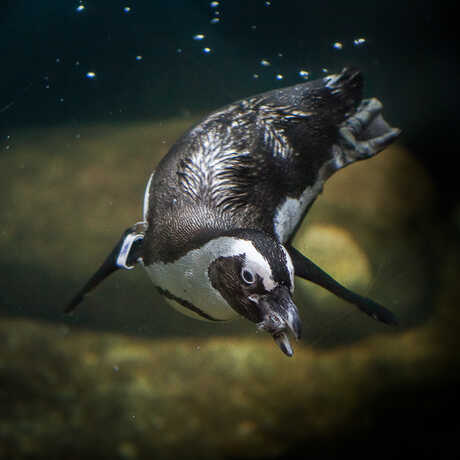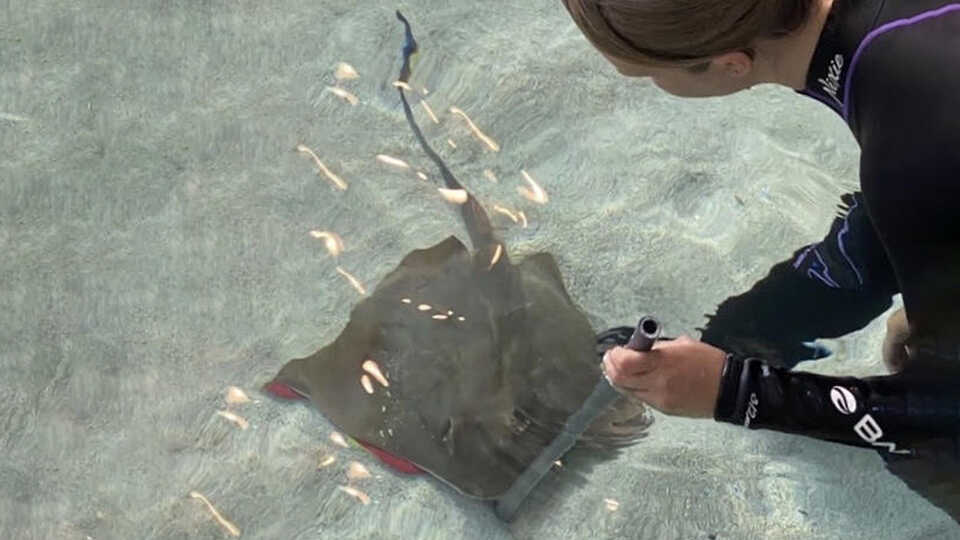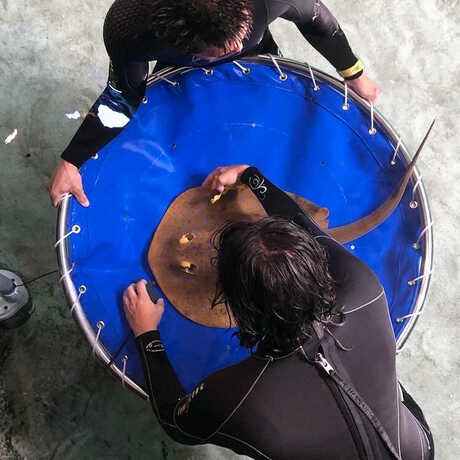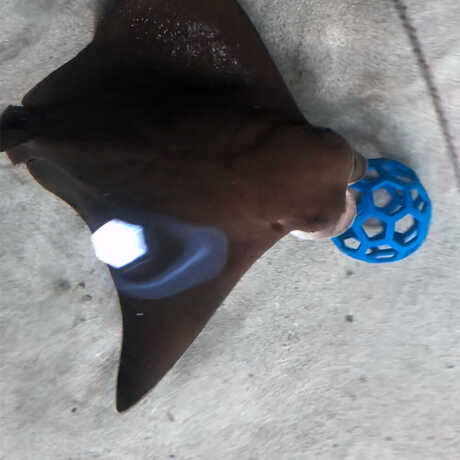Be mesmerized by colorful coral reef fish, soaring stingrays, and adorable African penguins—streaming live to your device, 24/7.


An Academy biologist uses a feeding stick to reward a blue-spotted ray.
Wondering why you occasionally see human feet alongside ray fins in the Reef Lagoon webcam? They belong to Academy biologists, who frequently enter the habitat to ensure our animals are happy, healthy, and stimulated.

Our biologists regularly interact with Reef Lagoon's resident rays as part of their enrichment and training program. The secret ingredient to building trust between species? Positive reinforcement...and food!
One of the primary behaviors they continually work on is encouraging the cownose rays to swim to a “station,” or a specific location in the habitat. When a ray approaches the station (in this case, the biologist’s hand) they will immediately be rewarded with a piece of food, positively reinforcing that desired behavior. Once the animals are accustomed to swimming to that spot to receive their food, it becomes much easier for biologists to perform health care tasks in the future, like conducting annual physicals or administering medication.
All animal training at the Academy is performed through this type of positive reinforcement, meaning the animals get rewarded when they complete a desired behavior, but are not punished in any way if they don’t. And, of course, all of our animals still get fed even if they don’t do the desired behavior. You can imagine that learning a new behavior can sometimes take many training sessions—and treats!
Pictured: A cownose ray doing the "hand target" behavior, which allows biologists to lead them to different areas of the habitat.

Hand-feeding our rays ensures that each animal receives a balanced diet while helping our biologists more accurately monitor and track how much food each individual is eating. An increase or decrease in appetite can be a sign that an animal is not feeling well or is going through developmental or seasonal changes that may require additional attention.
Watch: Feeding time in Reef Lagoon (via Instagram)
Hand-feeding also gives our biologists the opportunity to visually assess the animals up-close, contributing to a more holistic picture of their overall health and well-being.
Pictured: A ribbontail ray is returned to its habitat after a physical exam.

All kinds of animals play—and rays are no exception! Enrichment items often make cameo appearances in Reef Lagoon, including the treat-filled "hole-y roller" rubber dog toys seen in the accompanying image. The rays push these simple puzzles around in the sand, using their mouths' powerful suction to draw out the food hidden inside.
While it's difficult to ascribe motivations for animal behavior, sometimes it seems like our rays manipulate these toys just for fun!
Pictured: A cownose ray explores a rubber toy in Reef Lagoon.
Academy biologists use behavioral enrichment for a variety of animals, including the cownose rays, African penguins, our American alligator with albinism, Claude, and even our giant Pacific octopus. In Reef Lagoon, biologists guide the rays to learn specific behaviors through practice and experience. They don’t use training to teach them tricks, but focus instead on teaching them behaviors that can help us care for them more effectively.
"Enrichment and training programs are ingrained in the work that we do every day," says Brenda Melton, Steinhart Aquarium's associate director. "They're not extras, they're not if we have time—they are the baseline for animal care here at the Academy."
Watch the video below to learn more about training and enrichment at the Academy.
Be mesmerized by colorful coral reef fish, soaring stingrays, and adorable African penguins—streaming live to your device, 24/7.
